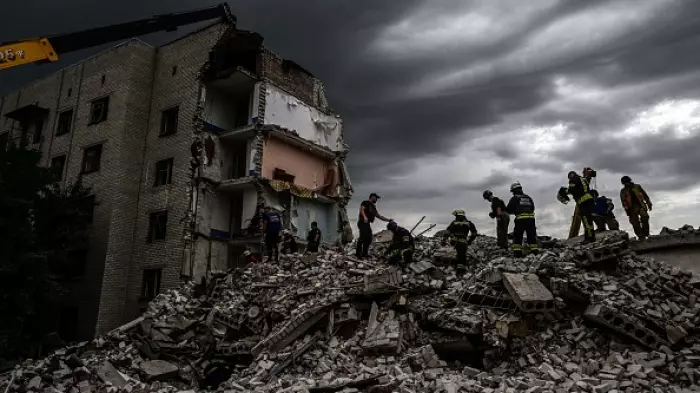I'm a fan of putting culture before structure as a way of improving the health system.
My biggest criticism of the Labour government’s restructuring of our health system is that it did it the other way round. I believe this basic error of judgement has led to the mess New Zealand’s health system now finds itself in.
Putting culture before structure, however, doesn't mean that structural change shouldn't follow. But the process should start with a change in the culture.
Culture before structure: NZ-style
In the 1980s, the government wanted a culture change to integrate population health with treatment health, link very small hospitals with bigger ones, and also, over time, reduce the boundaries between general practice and secondary care (hospitals).
The restructure that followed this cultural change was the setting up of 14 new area health boards to replace all the hospital boards and to transfer their population health responsibilities to the then-health department.
Area health boards were brought in, in stages, from 1983 to 1989. In 1993, they were abolished when the health system’s culture was changed from cooperation to competition, based on the Commerce Act.
We saw culture come before structure – but the culture was seriously flawed.
In 2000, the government wanted to return to a cooperative culture run by entities that understood the health status and needs of their populations.
This culture shift was to reduce the gap between GP care and hospital care and integrate healthcare between communities and hospitals.
So, in 2001, the government set up 21 district health boards (DHBs), each responsible for community and hospital services for populations decided by where people lived. DHBs were a new structure that would make the culture change easier.
This culture change has now been abandoned by the latest restructuring under the Pae Ora Act 2022.
The act has no culture underpinning other than a vacuous reference to equity and increased centralisation.
Extended primary care teams
Fortunately, health professionals always strive as best as they can for innovative ways to shift the culture for the betterment of patients.
A case in point is General Practice NZ – a body of primary-care networks – which is advocating greater integration through what it calls ‘extended primary care teams’.
The high-needs Porirua Union & Community Health Centre is used as an example. The model involves bigger numbers of GPs and extra nurse practitioners, social workers and administration staff.
This approach is driven by a desire to strengthen primary care by further integrating it. It also recognises that the small-business structure of mainstream GP practices is limited in how it can access everyone. This is particularly so in economically deprived or smaller, isolated communities with high health needs.
Improving integration within primary care to increase its scope of care and access is a good thing, but why not also improve integration between primary and secondary care?
Polyclinics
So, here's an idea – why not use polyclinics?
Polyclinics are not hospitals. Hospitals are comprehensive treatment facilities, often with operating theatres. There are several inpatient beds and various wards. Most operate 24 hours a day.
While larger than a single clinic or a general practice, a polyclinic is a medical facility that's smaller than a hospital.
They're generally concerned with one medical area like pre-and post-natal care, eyes, children affected by physical disorders, teeth and sexually transmitted diseases.
I had the chance to see polyclinics in action in the Netherlands many years ago. It was a positive glimpse.
Then I observed a top-down, one-size-fits-all attempt to bring them in within Britain's National Health Service. It also included a potential private-corporate takeover. There was a glimmer of a good idea behind the plan, but the execution was a shocker.
Failure was the only outcome. You can’t beat the NHS for giving us an inexhaustible supply of examples of how best to stuff up a good idea.
In the NZ context, polyclinics would be facilities for integrated care, whether primary care or between primary and hospital care, or both.
A Cuban experience
In 2020, I went to Cuba. There are three main tiers to the Cuban health system: community-based polyclinics, general secondary-care hospitals, and sub-specialist tertiary hospitals.
There are nearly 500 polyclinics across the island, each serving populations of between 20,000 and 60,000 people. They have a strong neighbourhood flavour.
Population size-wise, Cuban polyclinics are comparable with NZ's smaller former DHBs, such as Tairāwhiti, Wairarapa and West Coast (a little smaller than Whanganui and South Canterbury).
It means these polyclinics probably know their populations better than most of our former DHBs knew theirs – and definitely better than the over-centralised Te Whatu Ora – Health NZ knows us.
Cuban polyclinics are well staffed with doctors and nurses and can mobilise their workforces to ensure visits to each home annually for immunisation. This has proven to be enormously beneficial.
Polyclinics have supplied better vaccine distribution to their populations than is seen in many other countries.
This also contributed to Cuba’s world-leading response to the omicron variant of covid-19, which was far superior to NZ’s response.
Cuba has not had a covid-19 death since May 16, when it had two. NZ has less than half Cuba’s population, but in the week ended July 16, NZ had 20 deaths, and that was a declining rate.
Cuba’s polyclinics don’t just provide primary care. They extend into areas of sub-acute hospital care, including outpatient clinics and treatments with the necessary diagnostic support required.
Embryos of polyclinics here
There's no equivalent to these Cuban polyclinics in NZ, mixing primary and less complex hospital care.
I can see opportunities in expanding a new branch of specialist registered medicine called 'rural hospital medicine specialists'. These general practitioners have completed further training to work in rural hospitals.
They're the foundation of Te Whatu Ora’s Lakes District Hospital in Queenstown, which also has visiting specialists attending from Dunedin and Invercargill.
The nearby community trust-run Dunstan Hospital in Clyde is similar. However, in both cases, primary care is provided separately.
The former Northland DHB also started similar innovative initiatives using rural hospital medicine specialists in hospitals such as Dargaville, Bay of Islands and Kaitaia, and to help GPs, including after-hours services.
After a likely collapse of GP-owned practices several years ago, the former West Coast DHB began directly employing its own GPs, mainly in Greymouth and Westport.
Over time, rural hospital medicine specialists were also employed, a bonus for its Grey base hospital.
And the former Taranaki DHB recently set up a new medical centre in Hawera called South Taranaki Rural Health, staffed by rural hospital medicine specialists who are also trained in general practice.
It's early days, but it's starting to offer a limited range of primary and secondary care. If Te Whatu Ora gives it enough oxygen and support, this innovation might evolve into a polyclinic.
Perhaps the closest thing we have to a full polyclinic is the innovative former MidCentral DHB’s Horowhenua medical centre in Levin. It offers a wide range of services, which continues to expand. It has yet to evolve to provide full GP care.
Let's get a new Te Whatu Ora culture
Health NZ should embrace polyclinics functioning as integrated care facilities. This would be a positive innovation. But it can’t happen under its current top-down centralist culture.
The design of a polyclinic shouldn't be one-size-fits-all. Instead, the focus should be on access, both to primary care and to hospital outpatient clinics and other sub-acute care that could be done locally.
Adding pharmacy, podiatry and dentistry services should also be considered, depending on access and affordability.
But design must also recognise that polyclinics should not compete with privately owned general practices. The ethos has to be one of cooperation and collaboration.
The greatest system-wide innovation during the 20 years of DHBs was Canterbury’s pioneering work on integrated health pathways between care in the community and hospital care. Canterbury deservedly was recognised as a world leader for this success.
This success was because the pathways were robust. It was because they were clinically developed and clinically led based on health professional engagement in both community and hospital care.
Success also rested on a higher leadership culture in the DHB that was focused on engagement, support and enabling.
Its success was in the improved quality and accessibility of care in a way that made both good clinical and financial sense.
Canterbury became the most successful DHB in reducing the pressure on hospital admissions. Its acute demand management was outstanding
If Te Whatu Ora is to develop a similar culture, then polyclinics should work well in Aotearoa. They could help further expand health pathways between the community and hospitals.














